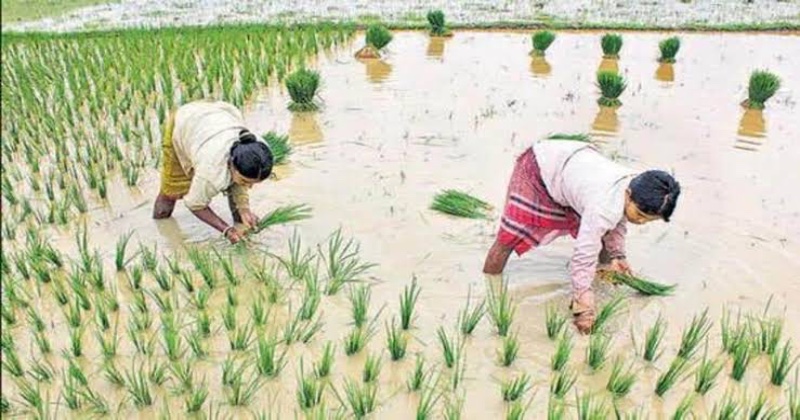
Despite nationwide below-average rainfall, there has been an unexpected increase in the cultivation areas for kharif crops compared to the previous year. While the sowing areas for rice and coarse grains have seen growth, pulses, oilseeds, and non-food crops like cotton, jute, and mesta have experienced a decline. The conclusion of the kharif sowing season is approaching, and consistent rainfall, especially for paddy cultivation, is crucial.
The Indian Meteorological Department has suggested that the southwest monsoon may make a comeback in a few days, potentially benefiting the sowing of kharif crops. Remarkably, rice cultivation in India has expanded to 398.08 lakh hectares, marking a 3.73% increase from the previous year’s 383.79 lakh hectares. This expansion in rice sowing acreage has compensated for the reduced sowing areas of other crops, resulting in a total kharif sowing of 1077 lakh hectares, surpassing the previous year by over 4.6 lakh hectares. Despite drought-like conditions in many parts of the country, this surge in rice cultivation has been notable.
However, the decline in pulses cultivation areas is a cause for concern, with an 8.5% reduction to 119.09 lakh hectares from the previous year’s 130.13 lakh hectares. The current pulse sowing area is 18% below the normal sowing levels, posing potential challenges for pulse production. Despite a deficit of 10% in rainfall since June 1 and historically low rainfall in August with a deficit of 36%, these trends in kharif sowing indicate a mixed scenario for India’s agricultural sector.

Post Your Comments